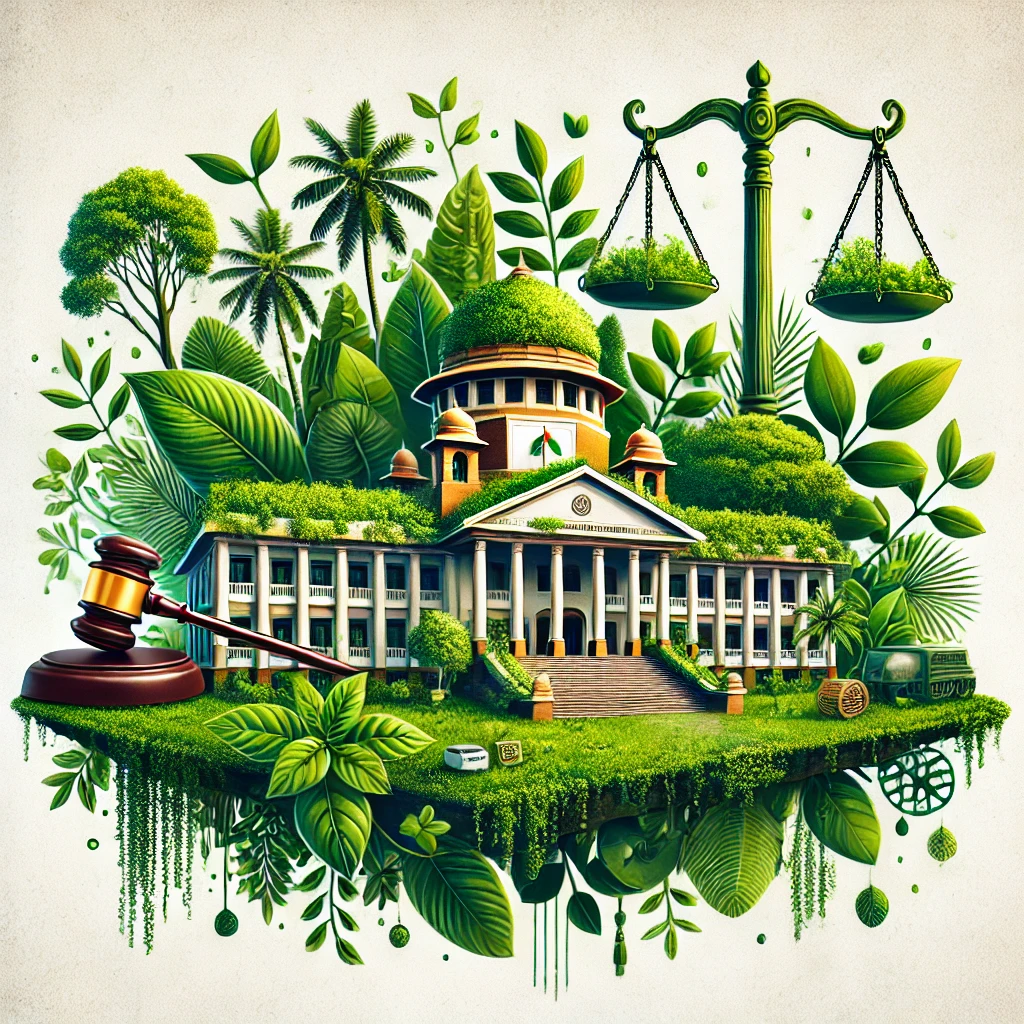Environmental laws at East Timor
East Timor (Timor-Leste) has been working to develop a legal framework for environmental protection and sustainable development since gaining independence in 2002. Given the country's relatively young status and its heavy reliance on agriculture, oil, and natural resources, the need for effective environmental laws is paramount. The government has made strides in creating policies and legal frameworks to address environmental issues, although challenges such as resource management, climate change, deforestation, and pollution remain.
Here are some key environmental laws and policies in East Timor:
1. The Environment Law (Law No. 5/2011)
Objective: The Environment Law is the cornerstone of environmental protection in East Timor. It provides the legal foundation for sustainable development, natural resource management, and environmental conservation.
Key Features:
Environmental Impact Assessment (EIA): This law mandates that any major development project, particularly those with the potential for significant environmental impact (such as infrastructure projects, industrial activities, or oil and gas exploration), must undergo an environmental impact assessment.
Environmental Protection and Preservation: The law lays out the principles of environmental protection and conservation, aiming to safeguard the country’s natural resources, including land, water, air, and biodiversity.
Pollution Control: It establishes provisions for controlling pollution, including air, water, and soil pollution, with the goal of reducing harmful emissions and waste disposal.
Sustainable Resource Management: Emphasizes the need for managing natural resources, such as forests, fisheries, and water, in a sustainable manner, ensuring that they are not overexploited and are conserved for future generations.
2. Law on the Establishment of the National Environmental Directorate (2012)
Objective: This law established the National Environmental Directorate (Direção Nacional do Ambiente), the agency responsible for environmental protection and policy implementation in East Timor.
Key Features:
Institutional Framework: The law creates the legal structure for the Environmental Directorate, which works under the Ministry of Agriculture and Fisheries.
Environmental Policy Development: The Directorate is tasked with developing and implementing national environmental policies and coordinating environmental programs across the country.
Regulation and Monitoring: The Directorate is responsible for monitoring compliance with environmental laws, issuing permits for projects that may affect the environment, and ensuring the enforcement of regulations.
3. The Forestry and Wildlife Law (Law No. 10/2003)
Objective: This law regulates the management and conservation of East Timor’s forests and wildlife.
Key Features:
Forest Protection: The law includes provisions for the protection of forests, including restrictions on logging activities and requirements for sustainable forest management.
Wildlife Conservation: The law aims to conserve wildlife species and their habitats, with provisions for the protection of endangered species.
Forest Management Plans: The law mandates the creation of forest management plans to ensure that forest resources are used sustainably and that deforestation is minimized.
4. The Water and Sanitation Law (Law No. 1/2012)
Objective: This law regulates the management of water resources in East Timor, focusing on both quality and access to clean water.
Key Features:
Water Resource Management: The law establishes regulations for managing water resources, ensuring that they are used sustainably and equitably. It covers both surface water and groundwater resources.
Water Quality Standards: It sets standards for drinking water and wastewater treatment, aiming to protect public health and the environment from contamination.
Access to Clean Water: The law also focuses on improving access to clean water and sanitation for the population, particularly in rural and underserved areas.
5. The National Biodiversity Strategy and Action Plan (NBSAP)
Objective: The National Biodiversity Strategy and Action Plan (NBSAP) is a policy document designed to guide the country’s efforts in biodiversity conservation, following East Timor's ratification of the Convention on Biological Diversity (CBD).
Key Features:
Biodiversity Conservation: The NBSAP outlines strategies for the conservation of East Timor’s rich biodiversity, including its terrestrial and marine ecosystems.
Sustainable Use of Resources: It emphasizes the sustainable use of natural resources, including forests, fisheries, and agricultural land, to ensure that biodiversity is not compromised by development or overexploitation.
Marine Biodiversity: Given East Timor’s extensive coastline and marine resources, the NBSAP includes provisions for the protection of marine biodiversity, such as coral reefs, fish species, and coastal habitats.
Invasive Species Management: It also addresses the threat of invasive species, which can damage local ecosystems and biodiversity.
6. The Land Law (Law No. 1/2017)
Objective: The Land Law governs land tenure and land use in East Timor, ensuring that land is used in a way that is consistent with sustainable development goals.
Key Features:
Land Rights: The law outlines land ownership, rights, and responsibilities, including provisions for resolving land disputes and ensuring that land is used for sustainable agricultural and development purposes.
Environmental Considerations: It includes clauses requiring land use activities, such as agriculture and construction, to be conducted in an environmentally sustainable manner.
Environmental Impact: As part of land development activities, the law requires an assessment of the potential environmental impacts of any land use change, particularly in ecologically sensitive areas.
7. The Petroleum Law (Law No. 2/2005)
Objective: The Petroleum Law regulates the exploration, production, and management of petroleum resources in East Timor, which is a significant part of the country’s economy.
Key Features:
Regulation of Petroleum Exploration: The law sets out the rules for petroleum exploration, including environmental protection provisions to minimize the impact of oil and gas operations on the environment.
Environmental Management: It mandates that all petroleum activities comply with environmental impact assessments, and companies are required to mitigate environmental damage during exploration and production.
Revenue Management: The law also outlines how revenues from petroleum resources should be managed, ensuring that profits contribute to national development while safeguarding the environment.
8. The Fisheries Law (Law No. 5/2003)
Objective: The Fisheries Law governs the use and management of marine and freshwater fisheries in East Timor.
Key Features:
Sustainable Fisheries Management: The law focuses on regulating fishing practices to ensure sustainable harvests and the long-term viability of fish stocks.
Marine Protected Areas (MPAs): It establishes protected marine areas to safeguard important habitats such as coral reefs and spawning grounds, contributing to the preservation of marine biodiversity.
Fishing Licenses and Regulations: The law regulates both commercial and subsistence fishing, including the issuance of fishing licenses, quotas, and seasonal restrictions to prevent overfishing.
Enforcement and Institutions
Ministry of Agriculture and Fisheries (MAF): The Ministry of Agriculture and Fisheries is responsible for implementing policies related to agriculture, fisheries, and environmental protection.
National Environment Directorate (DNA): The National Environmental Directorate is the primary body responsible for enforcing environmental laws and regulations, conducting environmental assessments, and promoting sustainability initiatives.
Environmental Impact Assessment Commission: This body reviews EIAs for proposed projects and makes recommendations on whether they should proceed based on their environmental impact.
Police and Judicial System: In cases of significant environmental violations, such as illegal deforestation, pollution, or illegal hunting, the police and judiciary are involved in enforcing penalties and holding offenders accountable.
Challenges and Developments
Deforestation: East Timor faces significant challenges in protecting its forests, which are under pressure from logging and land conversion for agriculture. Efforts are being made to combat illegal logging and promote reforestation.
Pollution: Waste management is an ongoing issue, with urban areas generating significant amounts of waste, and there are concerns about pollution from industrial activities and mining.
Climate Change: Like many Pacific Island nations, East Timor is vulnerable to the effects of climate change, such as rising sea levels, extreme weather events, and disruptions to agricultural production. There is a need for better climate resilience planning.
Sustainable Development: Balancing economic growth, particularly in the oil and gas sectors, with environmental protection remains a challenge, and East Timor is working to improve sustainable development practices.
Conclusion
East Timor has established a legal framework to address a range of environmental issues, from biodiversity conservation to pollution control and natural resource management. While the country has made progress, ongoing challenges, such as deforestation, pollution, and the impacts of climate change, require continued effort. The government is focused on building a sustainable future through the effective implementation and enforcement of environmental laws and policies.




























0 comments